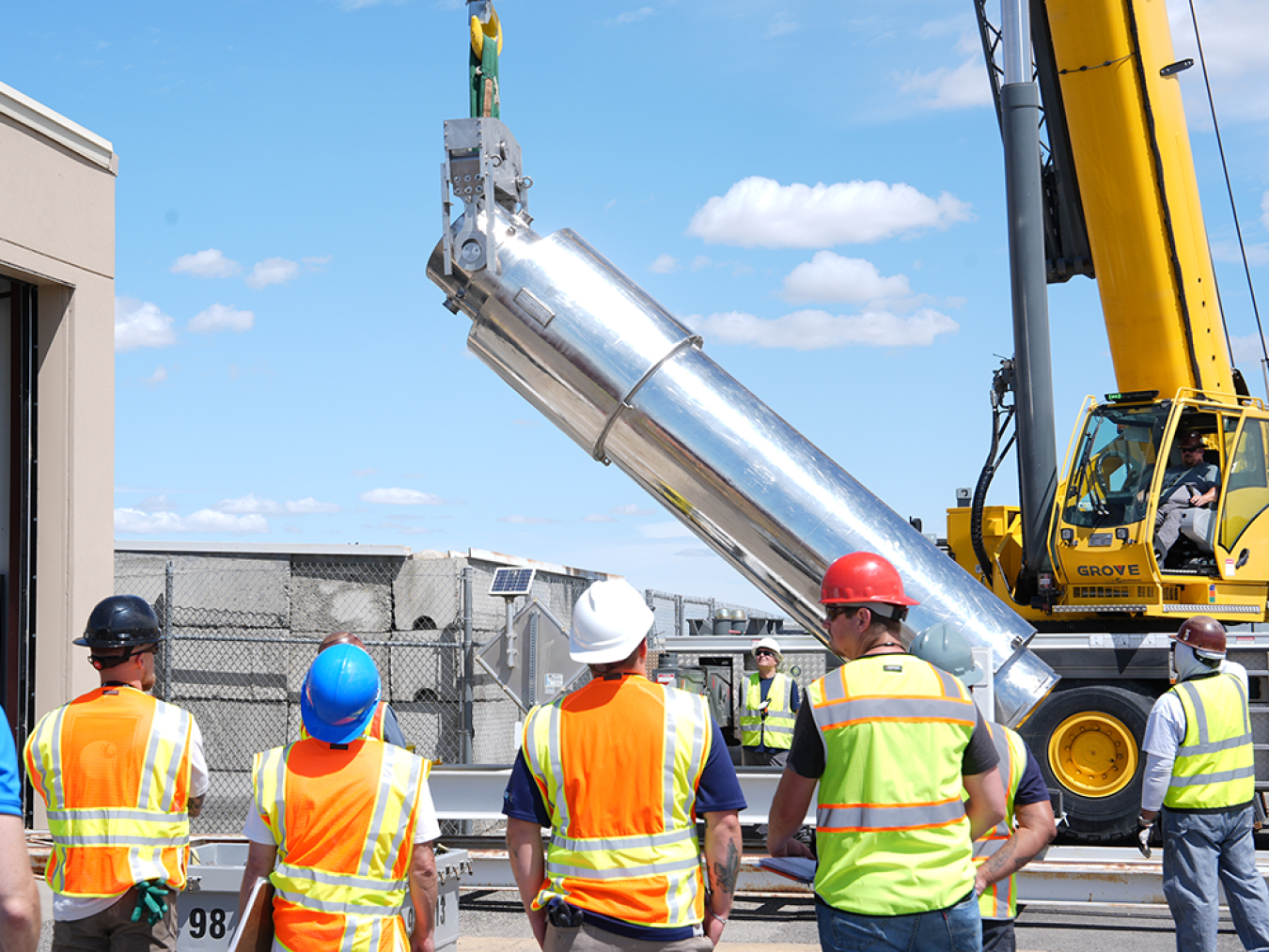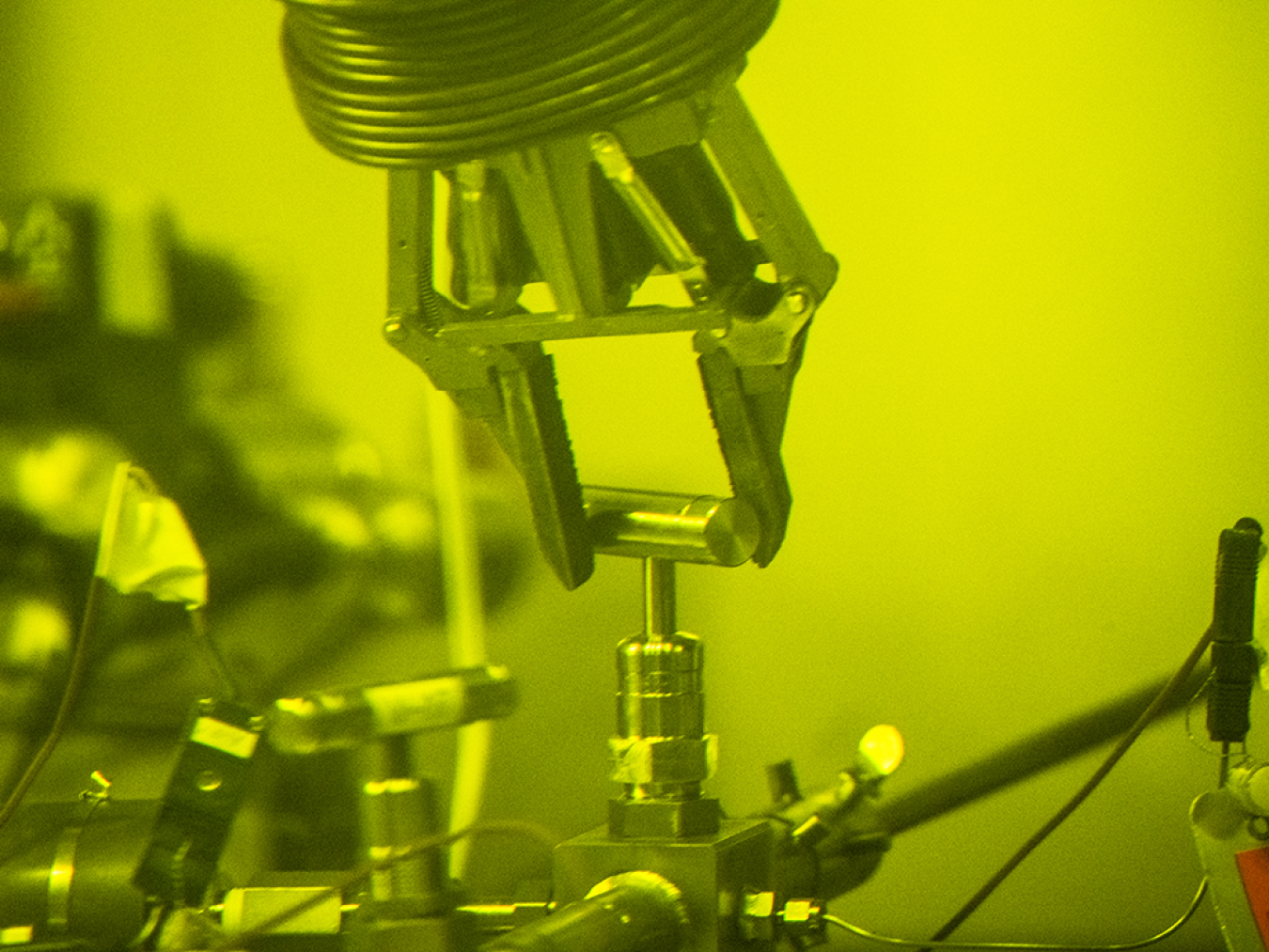Researchers at Pacific Northwest National Laboratory get first look at an advanced fuel developed by GE Vernova.
August 13, 2025Researchers at Pacific Northwest National Laboratory are getting their first look at an advanced fuel developed by GE Vernova that could help boost the performance of nuclear power plants and reduce the quantity of spent nuclear fuel.
The assemblies were recently shipped to the lab after spending six years in a commercial reactor as part of the U.S. Department of Energy’s Accident Tolerant Fuel program.
Special Delivery
GE Vernova’s Global Nuclear Fuel (GNF) initially loaded eight assemblies into a commercial reactor for two 24-month cycles of operation and were later relicensed and reinserted into the reactor for continued exposure.
The high burnup fuel rods shipped to the lab include full length and partial length rods — a feature that is unique to boiling water reactor fuels. The fuel pellets inside the rods contain gadolinium, which absorbs neutrons to improve the utilization of the fissile content in the fuel throughout the fuel cycle.
The assemblies were removed in 2023 and recently shipped to PNNL for examination to further evaluate its performance.
“The examination of these rods is the next step in our continuous drive to develop higher efficiency fuels that are safer and more reliable,” said Craig Ranson, Installed Base CEO, GE Vernova Hitachi Nuclear Energy. “We are proud to be part of this collaboration with the U.S. Department of Energy, PNNL and our utility partners to benefit the entire industry.”
“This is a significant milestone for our Accident Tolerant Fuel program,” said Frank Goldner, the Accident Tolerant Fuel federal program manager in the Office of Nuclear Energy. “The development of this fuel could further support the Trump Administration’s executive order to facilitate five gigawatts of power uprates at existing power plants by 2030 and high burnup fuels could be a big part of that.”
High Burnup Fuels
High burnup fuels utilize more of the fissile material in the fuel to extend operation for additional cycles and generate less waste over the life of the reactor.
They could also enable power uprates that would further support one of President Trump’s recent executive orders to facilitate five gigawatts of power uprates at existing power plants by 2030.
GE Vernova is developing several advanced fuel products through the Department’s Accident Tolerant Fuel program to help improve fuel cycle economics through lower operational costs and improved plant safety.
PNNL will conduct post-irradiation experiments over the next several years on the high burnup assemblies at its Radiochemical Processing Laboratory. Similar work is also underway on the company’s high burnup fuel at Oak Ridge National Laboratory.
The data will be used to support the development, engineering, and licensing efforts of the company’s fuel to higher exposures.
“This delivery represents a rare and valuable opportunity,” said Mark Nutt, director of PNNL’s nuclear energy market sector. “We look forward to realizing the full scientific potential of this material—that’s an area where PNNL is especially capable, given our multidisciplinary strengths. The resulting research could help achieve several important goals in service to the nation and go a long way toward providing abundant and reliable energy to the grid allowing for US energy dominance.”
Accident Tolerant Fuels
The Accident Tolerant Fuel program is supporting three of the nation’s largest nuclear fuel vendors in developing new fuel and cladding materials that could increase the performance and safety of commercial reactors.
GE Vernova, Framatome, and Westinghouse are all testing fuel concepts in commercial reactors across the country with the goal of widespread adoption by 2030.
Learn more about accident tolerant fuels.




